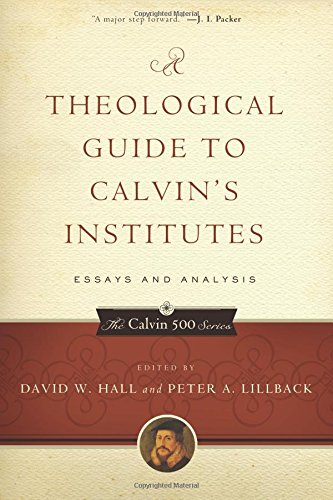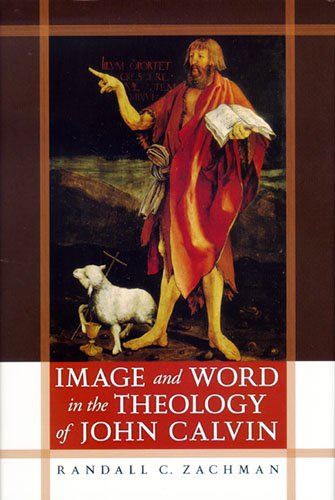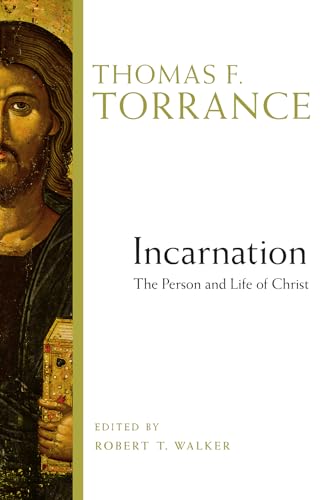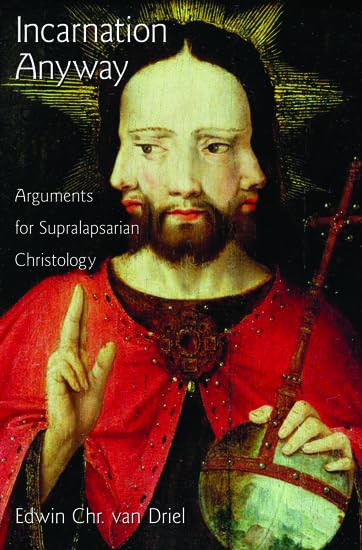Volume 34 - Issue 1
The Embattled Bible: Four More Books
By Robert W. YarbroughAbstract
Quite apart from commentaries and hermeneutical textbooks, books on the Bible—its nature and ultimately its authority—have been appearing with daunting frequency of late
Quite apart from commentaries and hermeneutical textbooks, books on the Bible—its nature and ultimately its authority—have been appearing with daunting frequency of late. To list just some of the titles from the last few years:
Published 2005:
- Donald Bloesch, Holy Scripture: Revelation, Inspiration, and Interpretation
- Peter Enns, Inspiration and Incarnation: Evangelicals and the Problem of the Old Testament
- Walter Brueggemann, The Book That Breathes New Life: Scriptural Authority and Biblical Theology
- Kevin Vanhoozer, ed., Dictionary for Theological Interpretation of the Bible
- N. T. Wright, The Last Word: Beyond the Bible Wars to a New Understanding of the Authority of Scripture
Published 2006:
- A. K. M. Adam, Faithful Interpretation: Reading the Bible in a Postmodern World
- Roland Boer, Rescuing the Bible
- Hoi Chee An and Katheryn Pfisterer Darr, eds., Engaging the Bible: Critical Readings from Contemporary Women
- Linda Day and Carolyn Pressler, eds., Engaging the Bible in a Gendered World: An Introduction to Feminist Biblical Interpretation in Honor of Katharine Doob Sakenfeld
- John Douglas Morrison, Has God Said? Scripture, The Word of God, and the Crisis of Theological Authority
- Clark H. Pinnock with Barry L. Callen, The Scripture Principle: Reclaiming the Full Authority of the Bible, 2nd ed.
Published 2007:
- Craig Allert, A High View of Scripture? The Authority of the Bible and the Formation of the New Testament Canon
- William P. Brown, Engaging Biblical Authority: Perspectives on the Bible As Scripture
- Joel B. Green, Seized by Truth: Reading the Bible as Scripture
Published 2008:
- G. K. Beale, The Erosion of Inerrancy in Evangelicalism: Responding to New Challenges to Biblical Authority
- Marcus Bockmuehl and Alan Torrance, eds., Scripture’s Doctrine and Theology’s Bible: How the New Testament Shapes Christian Dogmatics
- Craig Evans and Emanuel Tov, eds., Exploring the Origins of the Bible: Canon Formation in Historical, Literary, and Theological Perspective
Clearly it would be impossible in brief compass even to summarize this wide-ranging discussion (and more books could be listed). It is also being carried on, of course, in scores of journal articles, not just in English and in North America but around the world in numerous languages. It will be years before the dust settles (assuming it does) and we gain the distance necessary fully to assess developments currently unfolding. It seems everyone is weighing in. A sea change may be underway.
This essay will attempt to highlight and reflect on four additional studies that add their voices to this spirited and sometimes contentious conversation. The first two appeared in 2007. The other two were published in 2008. Since all four authors are or have been faculty at evangelical universities or seminaries, the witness of these books affords, among other things, an informative snapshot of how the Bible is understood at present in circles traditionally associated with a high view of Scripture.
1. Mark Alan Bowald, Rendering the Word in Theological Hermeneutics1
Bowald writes from within the community of scholarship associated with what has come to be called the theological interpretation of Scripture.2 He teaches at Redeemer University College in Ancaster, Ontario. He seeks to address “weakness in the contemporary perception of the event of reading the Bible” (ix). In particular, he seeks to make room for more robust attention to the role of divine agency in Scripture reading. To this end, the book seeks “to lay bare in a more comprehensive manner the basic dynamics of the reading of Scripture that underwrite any and all hermeneutical proposals” (x). Bowald hopes to foment “new ways of joining together to listen to God’s gracious Word and reading and responding together in faith” (x).
This book renders two major services. Firstly, it furnishes a useful taxonomy of three different ways Scripture is read currently among the scholars engaged in theological interpretation of Scripture. The taxonomy is visually depicted in over a dozen charts scattered throughout the book. The first way of reading Scripture, Bowald argues, focuses on human agency in the “text.” Leading advocates are the early Hans Frei, Kevin Vanhoozer, and Francis Watson. The second way focuses on human agency in the “reading,” or on what is commonly called reader response. Bowald interacts here with David Kelsey, the later Hans Frei, Werner Jeanrond, and Stephen Fowl. Leading spokesmen for the third way, which Bowald favors and for which this book serves as an apologetic, are Karl Barth, Nicholas Wolterstorff, and James K. A. Smith. This way, unlike the others, is said to prioritize divine agency in the reading of Scripture. It would be going too far to say that the first and second ways culpably neglect God, while the third way, Bowald’s, is the only way possible to affirm and hear God. But that seems to be a logical entailment of how Bowald sets up the taxonomy. Whatever the limitations of these schematics, the charts and informing discussion serve to make tolerable sense of various positions in a complex discussion. This in itself is a worthwhile achievement, though the discussion plotted is more reminiscent of the 1990s than of the present hour.
Secondly, Bowald devotes his opening chapter (1–23) to “The Eclipsing and Usurping of Divine Agency in Enlightenment Epistemology and Their Influence on Scriptural Hermeneutics.” In this he offers a useful exposition of portions of the Kant corpus to show that Kant “imposes immanent limits on both the knowing agent as well as the object in the epistemological action of creating or building knowledge” (4). In short, for Kant humans can never attain knowledge of God; they can at best—even with the help of Scripture—attain a state of “faith,” which is inferior to knowledge (7). In addition, the interpreter is forbidden to entertain input from other knowing agents or opinions in any attempted act of understanding, including the interpretation of Scripture. Church teaching, for example, must be rigidly excluded from consideration. The same is true for one’s own intuition. Suppose one felt from the totality of personal experience (of religion, of nature, of historical events, of incidents in one’s own life) that God exists and operates in our lives somewhat the way he is said to be present in Scripture— we cannot flee his presence (Ps 139:7); he numbers the hairs of our heads (Matt 10:30). All of this is inadmissible, in a Kantian interpretive world, from corroboration by or even discovery in Scripture unless it can be validated in advance by coldly rational means apart from the Bible. Bowald rightly and helpfully shows how this mentality was “an unnatural impediment to theological undertakings and especially to the reading of Scripture” (8). He also sketches how this outlook first trickled, then poured, into biblical scholarship, investing it with a de facto agnostic if not outright atheistic cast and agenda.3
This gave rise to what came to be called historical criticism and derivative methods. Bowald notes, “The investment in historical critical methods, underwritten by the immanent epistemological preferences and limitations of the Enlightenment, was unanimous across the theological and denominational spectrum at this point” (15).
It is understandable that Bowald is filled with zeal to drive home this insight, though it is only partly true. It is the main plank in the raison d’être for “theological interpretation” in the current depiction of its practitioners: Enlightenment biblical scholarship banned the God of Scripture from any active role in the reading of Scripture (and from its writing, for that matter), resulting in an atheological aridity in biblical scholarship from which theological interpretation (which for many seems to mean especially Karl Barth as understood by some) must rescue the Bible. There is a key point, however, at which this account of matters is a distortion.
Bowald lumps together all “biblical scholars of a conservative stripe” (15) with their non-conservative cohorts. This effectively demonizes all scholarly interpretation of the Bible since the Enlightenment. If true, this does establish the need for interpretation’s rescue by Bowald’s (and others’) “theological interpretation.” But it is not true. Bowald is either unaware of or simply misconstrues a host of interpreters who took part in the discussion dominated by Kantian (or later neo-Kantian) loyalties but who did so in their capacity as scholars attentive to the ground rules of professional interaction in the academy. That is, they spoke and wrote, not as mindless adherents to every point of the interpretive agenda that eventually emerged in the increasingly post- and anti-Christian hermeneutical systems associated with names like F. C. Baur, Julius Wellhausen, Ernst Troeltsch, and Rudolf Bultmann, but as an increasingly marginalized remnant seeking to get a hearing for Christian testimony in an intellectual marketplace that cruelly and often dishonestly proscribed what they claimed to have shown in their scholarship, which was in turn a corroboration of their personal knowledge of God confessed in their lives and churchmanship. I have in mind here people like J. C. K. von Hofmann, B. F. Westcott, J. B. Lightfoot, Bernhard Weiss, B. B. Warfield, Theodor Zahn, Otto Procksch, Adolf Schlatter, J. Gresham Machen, Martin Albertz, Oscar Cullmann, Joseph Bonsirven, George Ladd, and many others. Participating in historical-critical discussions and making use of historical-critical methods, they did not bow the knee to the dogmas of the historical-critical worldview—in fact they explicitly worked against them on both historical and theological grounds, agreeing with Bowald in his critique of Kantian thought.
This same zeal on Bowald’s part causes him to misconstrue even an ally of his cause like Kevin Vanhoozer. Using a curious method, as well as argument from silence, he makes much of one essay written by Vanhoozer in the mid-1980s on “The Semantics of Biblical Literature.”4 Since “the issue of divine agency is not addressed anywhere in this early piece” (60), Bowald associates Vanhoozer with Kantian understanding of divine agency in interpretation. This is a low blow from which Bowald has to back away on the next page (61) and in analysis of Vanhoozer’s subsequent work, which Bowald treats as a development in Bowald’s direction but which actually, I would argue, simply articulates the hermeneutical convictions latent in Vanhoozer’s outlook all along. He finally admits that Vanhoozer is one of the few today who “attempts to fully account for all three aspects” of biblical interpretation that comprise Bowald’s taxonomy: the text, the reader, and God (73). But he asks provocatively “whether Evangelicals [will] follow his lead or dismiss him as a prodigal son” (ibid.), as if these “Evangelicals” stand against privileging God in biblical interpretation and might whack any of their number who does this. Bowald’s innuendo here rightly reflects that he favors decoupling written Scripture from the transcendent Word of God in ways that Christians through the ages, as well as many recent evangelicals, have not felt to be warranted or wise.
The almost complete lack of interaction with German-language sources may be felt by some to be a weakness in a book so dependent on issues and figures rooted in that land and its hermeneutical history. On a stylistic note, some will tire of sentences with semi-colons but only one independent clause; dozens of times I thought I was reading a second sentence set off from a first one, only to realize I was digesting a sentence fragment. Finally, I felt the ending was naïve. So we can all “talk about God” à la Barth, “the most significant modern example of an attempt in this direction” (183 with n. 33). Many of us are not convinced that Barth himself (however plausible neo-Barthian strategies may prove) permits a high enough view of Scripture for us to know that the words we find in Scripture are sufficiently congruent with the Word on whom his theology seeks to center.
In the end, Bowald furnishes a bracing rebuke of Kant as he was appropriated in subsequent generations of theological interpreters. I found chapter one to be the high point. But the overall thrust of the book amounts to a hard break between text (= the Bible) and God, which seems to invite Kant’s dualism right back in.
2. A. T. B. McGowan, The Divine Authenticity of Scripture
- ^ Subtitled Mapping Divine and Human Agency (Hampshire, UK/Burlington, VT: Ashgate, 2007). Parenthetical page numbers in this section refer to this volume.
- ^ See, e.g., Kevin J. Vanhoozer, ed., Dictionary for Theological Interpretation of the Bible (London: SPCK; Grand Rapids: Baker, 2005).
- ^ Immanuel Kant’s own approach to religion has recently received a fresh defense: see Chris L. Firestone and Nathan Jacobs, In Defense of Kant’s “Religion” (Bloomington, IN: Indiana University Press, 2008). But biblical scholarship has not been driven so much by Kant himself as by “neo-Kantian” construals of the world, religion, revelation, and Christian faith. See, e.g. Thomas Willey, Back to Kant: The Revival of Kantianism in German Social and Historical Thought, 1860–1914 (Detroit: Wayne State University Press, 1978). For how this played out in the twentieth century’s most influential NT scholar, see R. A. Johnson, The Origins of Demythologizing: Philosophy and Historiography in the Theology of Rudolf Bultmann (Leiden: Brill, 1974). Bowald’s critique is in line with applications of Kant that have been dominant in biblical interpretation.
- ^ Kevin J. Vanhoozer, “The Semantics of Biblical Literature: Truth and Scripture’s Diverse Literary Forms,” in Hermeneutics, Authority, and Canon (ed. D. A. Carson and John D. Woodbridge; Grand Rapids: Zondervan, 1986), 53–104, 374–83.
- ^ Downers Grove: IVP, 2007. Parenthetical page numbers in this section refer to this volume.
- ^ Nottingham: Apollos, 2007.
- ^ Yet he calls for movement to “moderate the dominance of the American inerrantist tradition” (214). Throughout the book, there is a question in my mind whether inerrancy is wrong because there is a theological case against it, on the one hand, or because it is associated in McGowan’s mind with America, with particular developments on American shores that he has not understood and with conceptions of the doctrine that are not necessarily accurate.
- ^ Unless otherwise noted, Scripture quotations are from the ESV® Bible (The Holy Bible, English Standard Version®). Copyright © 2001 by Crossway Bibles, a publishing ministry of Good News Publishers. Used by permission. All rights reserved.
- ^ Still insightful here, and important if we are to heed the “European Reformed tradition” that McGowan favors, is Herman N. Ridderbos, Redemptive History and the New Testament Scriptures (2nd ed.; trans. H De Jongste; rev. Richard B. Gaffin Jr.; Phillipsburg, NJ: Presbyterian & Reformed, 1988).
- ^ See, e.g., http://www.dailymail.co.uk/news/article-1162039/Minister-beaten-clashing-Muslims-TVshow.html (accessed March 15, 2009).
- ^ The first article of the statement, however, is “God the Son.”
- ^ http://www.fbmaryville.org (accessed March 9, 2009). Reprinted in “SBC Pastor Killed in Shooting,” Baptist Press, http://www.baptistpress.org/BPnews.asp?ID=30033 (accessed April 2, 2009). Even more astounding is the response of Fred Winter’s wife in an interview about a week after the murder: http://www.chrisbrauns.com/ 2009/03/18/cindy-winters-reflects-the-grace-and-glory-of-christ.
- ^ See Michael Spencer, “The Coming Evangelical Collapse,” Christian Science Monitor, March 10, 2009, http://www.csmonitor.com/2009/0310/p09s01-coop.html . Scholars like David Wells have been sounding similar notes for some time.
- ^ Jackson, MS: Reformed Academic Press, 2008. Parenthetical page numbers in this section refer to this volume.
- ^ Jack B. Rogers and Donald K. McKim, The Authority and Interpretation of the Bible: A Historical Approach (San Francisco: Harper & Row, 1979).
- ^ See John D. Woodbridge, “Biblical Authority: Towards an Evaluation of the Rogers and McKim Proposal,” TJ NS 1 (1980): 165–236. This was expanded and published as Biblical Authority: A Critique of the Rogers/McKim Proposal (Grand Rapids: Zondervan, 1982).
- ^ Holy Scripture (Downers Grove: IVP, 1994), 33–34.
- ^ Grand Rapids: Baker, 2008. Parenthetical page numbers in this section refer to this volume.
- ^ Cf. 182: “the cacophony of voices offered by biblical critics” (in contrast to Brevard Child’s allegedly monolithic “canonical” witness); 230: “the Bible does not offer a single, well-integrated univocal theology; it offers instead numerous overlapping but nonetheless distinctive theologies!”
- ^ http://www.bookreviews.org/pdf/6514_7044.pdf
- ^ http://www.bookreviews.org/pdf/6514_7393.pdf
- ^ George Eldon Ladd, The New Testament and Criticism (Grand Rapids: Eerdmans, 1967).
- ^ On Christian Doctrine 4.9.23, available at http://www.ccel.org/ccel/augustine/doctrine.iv.v.html .
- ^ Scholars of the era and their scholarship covering both Testaments is on display in Donald McKim, ed., Dictionary of Major Biblical Interpreters (Downers Grove/Nottingham: IVP, 2007); see especially pp. 45–66 (“Biblical Interpretation in the Eighteenth and Nineteenth Centuries”; note bibliography on 65–66). More broadly see Ninian Smart, et al., eds., Nineteenth Century Religious Thought in the West (3 vols.; Cambridge: Cambridge University Press, 1985).
- ^ A point made with less restraint than I would by Iain Provan, “‘How Can I Understand, Unless Someone Explains It to Me?’ (Acts 8:30–31): Evangelicals and Biblical Hermeneutics,” BBR 17 (2007): 1–36. Editor’s note: See Jason Sexton, “How Far Beyond Chicago? Assessing Recent Attempts to Reframe the Inerrancy Debate,” Them 34 (2009): 34–61.
- ^ The First and Second Letters to Timothy (AB 35A; New York: Doubleday, 2001), 42–53.
- ^ The Salvation Historical Fallacy? Reassessing the History of New Testament Theology (History of Biblical Interpretation Series 2; Leiden: Deo, 2004).
- ^ The Johannine Corpus in the Early Church (Oxford: Oxford University Press, 2004).
- ^ Johnson, The First and Second Letters to Timothy, 53.
- ^ http://www.eastern.edu/welcome/missionstatement.html (accessed March 13, 2009). This is an official statement of the university where Sparks teaches.
- ^ Christianity and Liberalism (1923; repr., Grand Rapids: Eerdmans, 1946).
- ^ Cf. Ernst Troeltsch, “The dogmatics of the ‘Religionsgeschichtliche Schule,’” AJT 17 (1913): 1–21.
- ^ See Troeltsch, “Historical and Dogmatic Method in Theology,” in The Historical Jesus Quest (ed. Gregory W. Dawes; Louisville: Westminster John Knox; Leidendorp: Deo, 1999), 29–53.
- ^ For critical comments on an earlier draft of this review I would like to thank Kevin Vanhoozer (portion only), Doug Sweeney, Charles Anderson, and Hans Madueme.
Robert W. Yarbrough
Bob Yarbrough is professor of New Testament at Covenant Theological Seminary in St. Louis, Missouri, an editorial board member of Themelios, co-editor of the Baker Exegetical Commentary on the New Testament as well as the Exegetical Guide to the Greek New Testament (Broadman & Holman), and past president of the Evangelical Theological Society.
Other Articles in this Issue
Why are we talking about preaching with power? Because of what Christianity is...
In the mid-twentieth century, one could readily find informed Protestant observers acknowledging the Calvinist tradition’s major missionary contribution...
The summer of 2007 was the wettest in Britain since records began, registering over twice the usual amount of rainfall between May and July...
How Far Beyond Chicago? Assessing Recent Attempts to Reframe the Inerrancy Debate
by Jason S. SextonThe doctrine of inerrancy has been a watershed issue among evangelicals in the West, perhaps now more evident than ever...
No doubt my two children would cringe at the title of this short piece...






